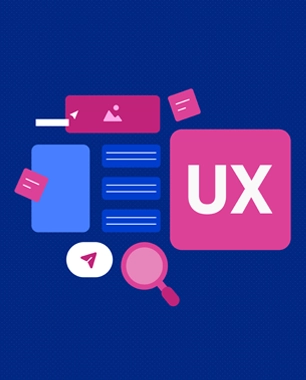The Intersection of AI and Creativity: How Technology is Redefining Design


-
Written by
admin
-
Category
AI
-
Date
March 30, 2025
Artificial intelligence (AI) has long been seen as a tool for automation, data analysis, and efficiency. But today, AI is making its mark on creative fields, transforming the way designers, artists, and developers approach their work. From AI-generated art to algorithm-driven branding, the relationship between technology and creativity is evolving at an unprecedented pace.
As someone working at the crossroads of technology and design, I’ve been fascinated by how AI is reshaping creative processes—not replacing human creativity but augmenting it in new and unexpected ways.
AI as a Creative Partner, Not a Replacement
Contrary to the fear that AI will replace designers, it’s actually acting as a collaborator, helping to streamline workflows, enhance creative output, and generate new possibilities. Some key areas where AI is impacting design include:
1. AI-Generated Art & Design
AI-powered tools like DALL·E, Midjourney, and Runway ML can create stunning visuals from simple text prompts. Designers can use these tools to:
- Brainstorm concepts by generating mood boards.
- Enhance creativity by experimenting with AI-generated textures, patterns, or compositions.
- Speed up repetitive tasks like background removal or color corrections.
- Rather than replacing artists, these tools serve as inspiration engines, helping designers explore new visual styles that might not have been possible before.
2. Algorithm-Driven Branding & Identity Design
AI is also revolutionizing branding and identity design by analyzing data and generating logos, color schemes, and typography based on industry trends. Platforms like Looka and Brandmark allow businesses to create entire brand identities using AI, reducing the time and cost of traditional design processes.
However, human designers still play a critical role in refining, curating, and ensuring that AI-generated assets align with a brand’s unique personality and vision.
3. Generative Design in Architecture & Product Development
In fields like architecture and industrial design, generative AI is optimizing structures by:
- Using parametric algorithms to generate multiple design variations.
- Testing real-world functionality before production.
- Enhancing sustainability by creating eco-friendly materials and efficient layouts.
- For example, Nike uses AI-driven generative design to create high-performance footwear, and Airbus applies it to aircraft parts to reduce weight and improve aerodynamics.
4. AI in Motion & Interaction Design
For interactive experiences, AI is enhancing:
- AI-driven animation that adapts to user input.
- Smart interfaces that adjust in real-time based on user behavior.
- AI-generated music and sound design to match different moods or settings.
- This is particularly exciting for areas like gaming, augmented reality (AR), and virtual reality (VR), where AI can create immersive, adaptive experiences tailored to each user.
The Ethical Side: Can AI Be Truly Creative?
As AI continues to evolve, one of the biggest debates in the tech and design world is: Can AI be creative, or is it just remixing existing patterns?
AI-generated designs are based on patterns found in existing data, meaning they lack true originality, human emotion, and cultural context. Designers still need to apply human intuition, storytelling, and ethical judgment to ensure that AI-driven creations align with real-world needs.
Additionally, there are concerns about:
Bias in AI models, leading to exclusionary or problematic design outputs.
Intellectual property issues when AI is trained on copyrighted works.
Over-reliance on AI, potentially reducing human creative skills over time.
Where Do We Go from Here?
The future of AI in design isn’t about replacing human creativity—it’s about enhancing and accelerating the creative process. Designers who embrace AI will gain new tools to push boundaries, experiment faster, and create more personalized experiences.
However, technology alone isn’t enough. The most impactful designs will always come from the unique combination of human insight, storytelling, and cultural understanding—elements that AI, no matter how advanced, still struggles to replicate.
In this evolving landscape, the best designers will be those who learn to work alongside AI rather than against it, using it as a tool for innovation rather than a crutch for automation.

